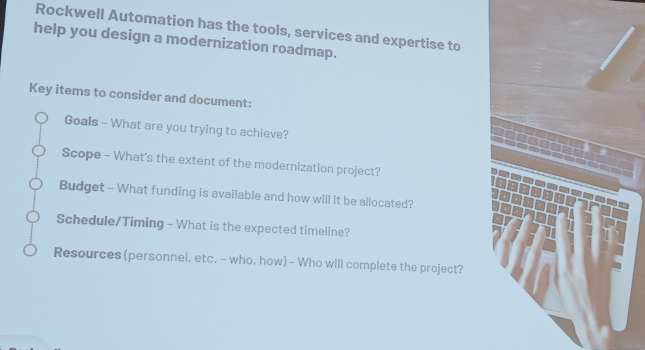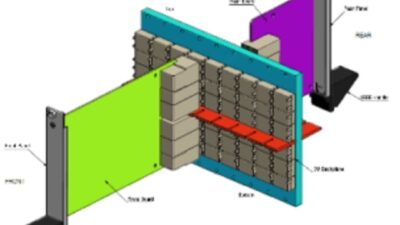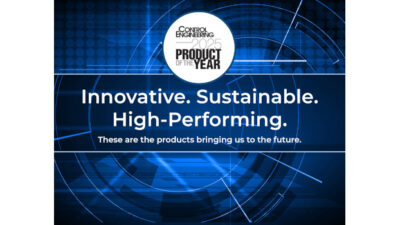Few in process manufacturing are ready for digital transformation, while most say control system modernization would be useful for business. Updating control systems can boost digital transformation, operational efficiency, sustainability and other efforts.

Learning Objectives
- Understand three key steps to modernizing controllers or control systems.
- Review that most know that modern industrial controllers could help, but haven’t resolved obstacles to upgrades to achieve benefits that smart devices and modern control systems provide.
- Learn that controller upgrade options extend beyond do it yourself to include getting help from the automation vendor or a system integrator with needed expertise.
Industrial controller modernization insights
-
Three key steps can help in modernizing controllers or control systems.
-
Most know that modern industrial controllers could help, but haven’t resolved obstacles to upgrades to achieve benefits that smart devices and modern control systems provide.
-
Controller upgrade options extend beyond do it yourself to getting help from the automation vendor or a system integrator with needed expertise.
Results of control system modernization include improved productivity and less risk. How? A modern control system can improve asset utilization and system performance; provide easy access to actionable, plant-wide information globally; improve sustainability with extended product lifecycles and cultivate innovation with increased system flexibility, suggested Kris Dornan, commercial marketing manager for large controllers, Rockwell Automation. Dornan outlined three key steps to modernize controllers in an Automation Fair 2023 session called “A new way to step forward: Modernize your control system.” The presentation also acknowledged Dennis Wylie, Liz Prosak, Su Min Tan and Angela Ruffin.

Three key steps to modernize controllers
When controller or control system upgrades are needed, Dornan said, it’s important to:
-
Assess and understand current state of controller or control system lifecycle risks.
-
Plan the modernization.
-
Effectively implement and commission the project. Virtual commissioning adds considerable value and reduces controller migration risks by creating a digital twin of the plant and implementing virtually first to resolve any issues.
A scaled migration can address most-needed parts of the control system first, minimizing greatest risks along the way. In addition, Dornan confirmed, updated control systems and modern software can help attract younger engineers to fill the skills shortages that are increasing in many industries.

Most know that modern industrial controllers could help, but…
Connecting platforms enable better data sharing and use, part of most industrial digitalization efforts. Many plants often have legacy programmable logic controllers (PLCs), industrial PCs, thin clients and graphic terminals, mobile applications and centrally managed service on-site and off, and modern control systems often use protocols for easier communications so information can flow.
While it makes sense, Dornan said, digital transformation and Industry 4.0 efforts are lagging. Citing a May 2020 independent blind study of 360 global executives and senior managers in seven industries, 92% of industrial process manufacturing are not completely ready for industrial transformation, although 57% said modernization and migration engineering would be useful for their business.
Dornan said $71.5 billion of installed base of process automation systems are reaching the end of useful life of 20 years, including 78% of operating control systems over 10 years of age. ARC Advisory Group research of 157 process manufactures said transformation barriers include organizational accountability, culture and employee change management.
Benefits from upgrades to smart devices and modern control systems
Because controllers are embedded in smart devices for automation and control, updating to smart devices can improve data-driven productivity, cybersecurity, safety and sustainability efforts, depending on applications, Dornan said. Smart devices enabled with logic devices and control capabilities include variable frequency drives, servo drives, motor starters, condition monitoring devices, power monitoring devices, safety devices and some sensors.
Smart devices, Dornan said, can increase productivity, produce higher-quality products at lower costs, support regulatory compliance, identify and address worker safety issues and optimize supply chains. Specific benefits from smart devices that happens is through better:
-
Real-time data with context, including current, voltage, kilowatthours, running time, temperature and safety.
-
Contextualized information on production output, warnings and alarms, energy use and downtime causes.
-
Knowledge through analytics, such as mean time to repair, predictive maintenance indicators and overall equipment efficiency.
-
Optimization of actions with more efficient process workflows and continuous
For controllers, lifecycles progress from active, active mature, end of life to discontinued. Similarly, compared to legacy controllers, modern controllers provide better performance, availability, longevity, safety, upgraded communications and cybersecurity, he suggested. Benefits include easier integration with other plant systems include business systems with advance Ethernet capabilities and OPC Unified Architecture (OPC UA). Some enhance cybersecurity with IEC 62443-4-2 compliance and offer scalable safety options with capabilities for safety integrity levels (SIL 2 PLd / SIL 3 PLe), modern future-proof input/output (I/O) capabilities, support for more axes of motion (up to 256 axes) and up to 300 EtherNet/IP nodes. (EtherNet/IP is an ODVA communication protocol.)
Controller upgrade options: DYI, automation vendor, system integrator
Those who upgrade smart devices, controllers and control systems can do it themselves, get help from the automation vendor or get support from a system integrator.
Tools to help with device and controller upgrades include control design software (some is free) for selection and system architecture design, conversion tools to carry over logic from legacy controllers to modern ones, old controller return for credit program along with controller and I/O wiring conversion systems. Dornan suggested there are many reasons to start over with code if it’s too old, including use of modern code libraries. An automation vendor can discussion options.
Automation vendors may help with controller upgrade projects, including modernizing or replacing, migration and converting from third-party equipment. Lifecycle services can include training assessments, safety audits and assessment, installed base evaluation and network and cybersecurity assessments to minimize obsolescence risks.
System integrators can be independent or partnered with automation vendors to provide services, demonstrate automation control system competencies with application and industry expertise.
Outdated controllers create unnecessary risks, Dornan said beyond being unsupported or not adequately supporting engineers, maintenance and operators. Outdated controllers also may not meet today’s digital transformation or cybersecurity requirements or provide adequate measurements and control for sustainability and net-zero global carbon requirements. Is controller or control system obsolescence leaving money on the table?
Mark T. Hoske is content manager, Control Engineering, CFE Media and Technology, [email protected].
CONSIDER THIS
What opportunities are you losing by not modernizing controller and control systems?
ONLINE
Control Engineering 2023 SCADA research: Many wait too long to upgrade
www.controleng.com/articles/control-engineering-2023-scada-research-many-wait-too-long-to-upgrade




